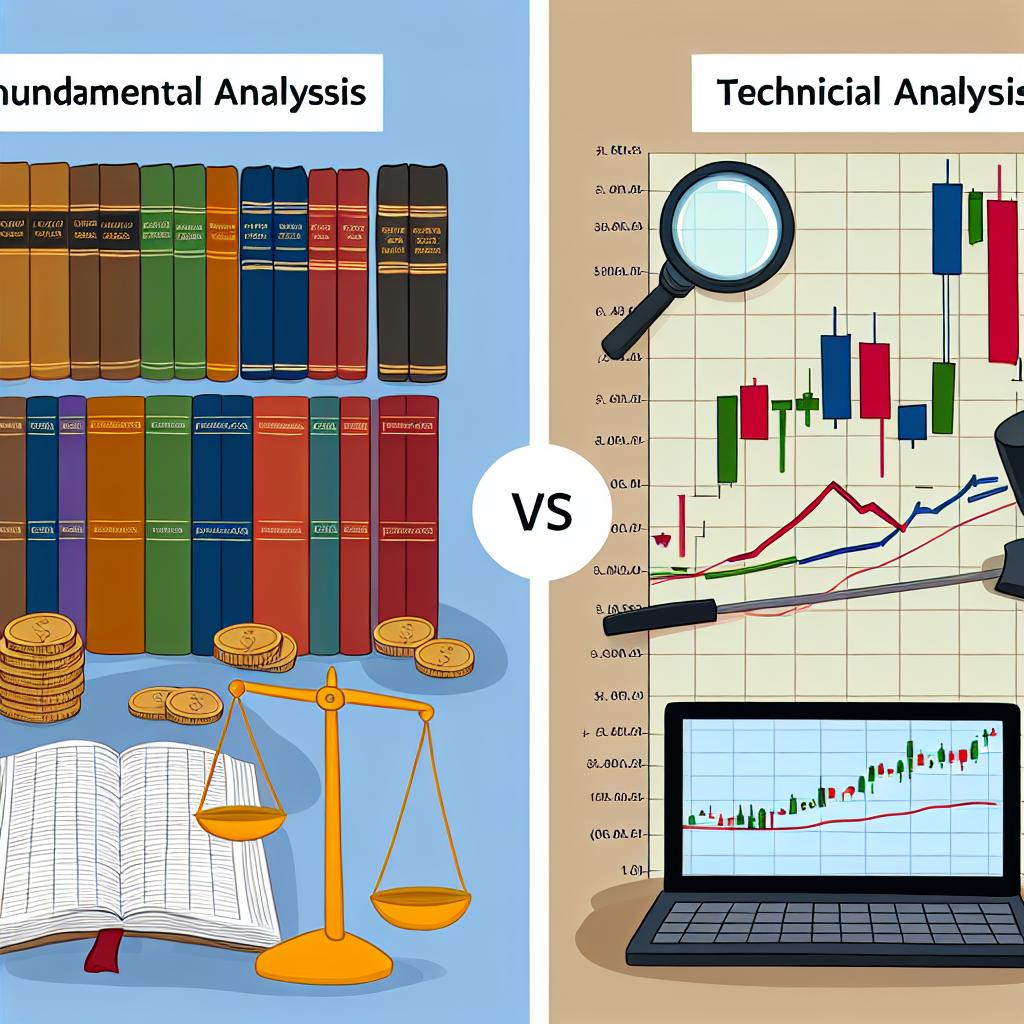
The Difference Between Fundamental and Technical Analysis
Understanding Fundamental Analysis
Fundamental analysis is an essential concept in finance, renowned for its role in assessing the intrinsic value of securities, such as stocks and bonds. Unlike other methods that may focus strictly on market price trends or historical data, fundamental analysis delves into the very core of what makes a company valuable, assessing economic, financial, and both qualitative and quantitative factors in its evaluation process.
The Financial Health of a Company
Central to fundamental analysis is an in-depth examination of a company’s financial statements—the balance sheet, income statement, and cash flow statement. Diligent scrutiny of these documents allows analysts to gain insights into a company’s revenues, expenses, assets, and liabilities.
- The balance sheet provides a snapshot of a company’s financial condition at a specific point in time, detailing assets and liabilities.
- The income statement reveals information about a company’s profitability over a certain period, often highlighting revenue streams and expenses.
- The cash flow statement reflects how much cash is generated and used during a period, offering insights into the financial flexibility of a business.
These financial statements collectively craft a clear picture of a company’s financial health, enabling analysts to estimate future performance and potential earnings growth.
The Impact of Economic Indicators
Economic indicators play a pivotal role in fundamental analysis by demonstrating the larger economic environment in which a company operates. Metrics such as interest rates, inflation rates, and GDP growth can significantly influence a company’s bottom line:
- Interest Rates: Fluctuations in interest rates affect a company’s borrowing costs and, consequently, its profitability.
- Inflation: Changes in inflation can impact consumer purchasing power and operational costs.
- GDP Growth: A growing economy often suggests stronger company performance due to increased demand for goods and services.
Through analyzing these indicators, fundamental analysts can assess potential operational challenges and opportunities that might affect investment value.
Industry Analysis and Competitive Forces
In fundamental analysis, industry analysis is indispensable for understanding how various forces might impact a company’s performance in the future. By examining industry health, potential threat of new entrants, power of suppliers and buyers, and existing competition, analysts form insights that influence investment decisions.
For instance, industries might grow due to technological advancements or emerging markets, offering ripe opportunities for investment. Conversely, increased competition could squeeze profit margins, deterring potential investors.
Long-Term Perspective in Fundamental Analysis
Fundamental analysis is predominantly the realm of long-term investors aiming for sustained earnings growth. These investors focus on value investing, a strategy that involves identifying undervalued stocks with the potential for appreciation over time. The intrinsic value derived from fundamental analysis helps investors make informed decisions regarding which companies offer robust investment potential based on their future earnings power.
Exploring Technical Analysis
Contrasting with fundamental analysis, technical analysis focuses primarily on price patterns and trends. This method operates on the principle that historical trading data can be instrumental in predicting future market behavior. Unlike fundamental analysts, technical analysts prioritize chart patterns and technical indicators over financial statements.
Core Principles and Tools in Technical Analysis
Technical analysis is predicated on the belief that all known information is already embedded within stock prices. Consequently, price movements become the focal point of analysis. Analysts devote considerable energy to identifying trends—uptrends, downtrends, and sideways trends—as well as deploying a range of indicators:
- Price Movements: Analysts track and analyze the fluctuations to determine market sentiment and potential price outcomes.
- Trend Identification: Recognizing patterns is crucial for forecasting future movements, serving as a guide for buying or selling decisions.
- Indicators: Tools like moving averages, relative strength index (RSI), and volume offer quantitative measures for analysis.
Short-Term Approach with Technical Analysis
Technical analysis is primarily the domain of short- to medium-term traders who aim to exploit immediate price changes. Day traders and swing traders often rely on this method, seeking to capitalize on the market’s short-lived opportunities. The assumption underpinning technical analysis is that past trading patterns are indicative of future market behavior.
Comparing Fundamental and Technical Analysis
Fundamental and technical analysis represent two distinctive schools of thought in investment strategy:
- Fundamental Analysis: This approach emphasizes understanding the intrinsic value of a company and is best suited for those with a long-term investment horizon. By assessing underlying economic, financial, and competitive factors, it guides investors seeking durable value.
- Technical Analysis: In contrast, this method zeroes in on price trends and patterns. It is ideal for those attracted to short-term trading opportunities, relying on charts and indicators to inform decisions.
The Synergy of Combining Techniques
While fundamental and technical analysis differ significantly in approach, they are not mutually exclusive. Many investors find considerable advantages in integrating these methods to enhance their investment strategies. For example, an investor might undertake fundamental analysis to uncover financially robust companies with fundamental value, subsequently employing technical analysis to hone in on the ideal entry or exit points for a transaction.
Incorporating both methods enables investors to use the comprehensive insights from fundamental analysis and the timely cues from technical analysis, optimizing their investment decisions across varying market conditions. For more in-depth explorations, resources like Investopedia and other financial education platforms offer valuable guidance and information.
This article was last updated on: July 6, 2025